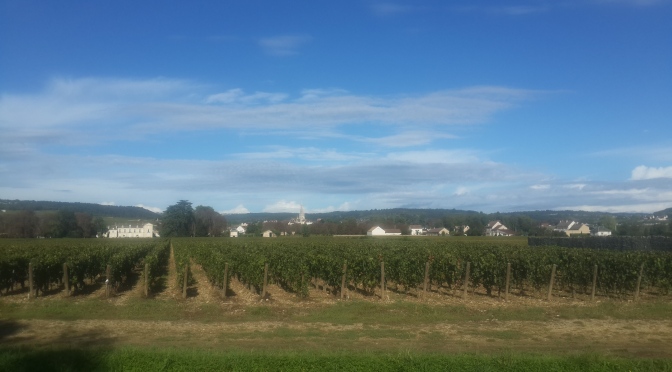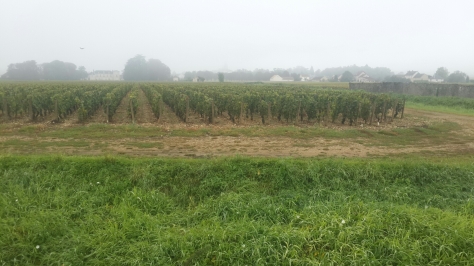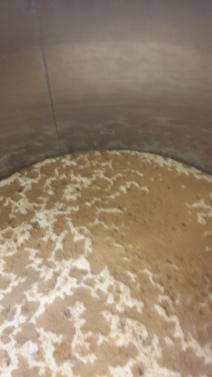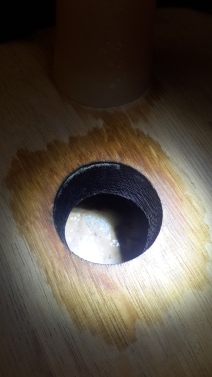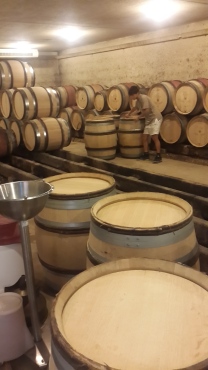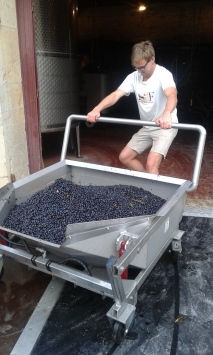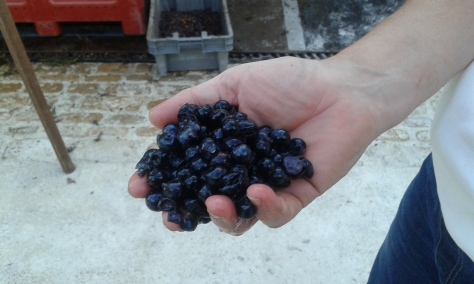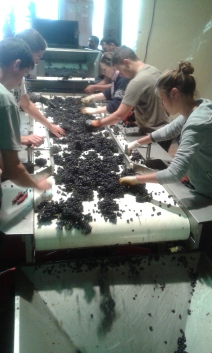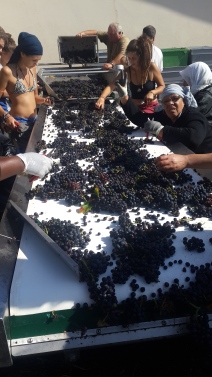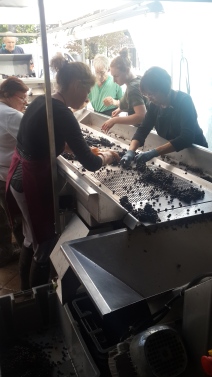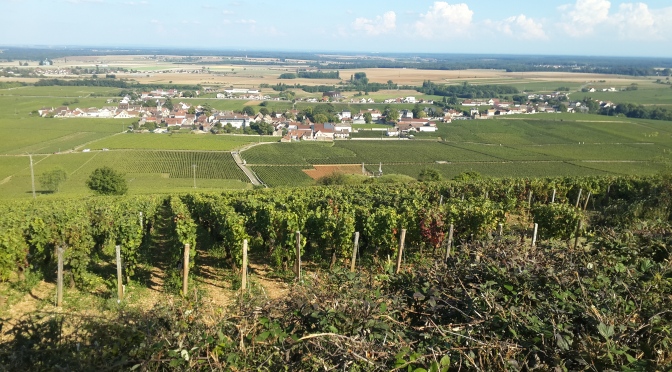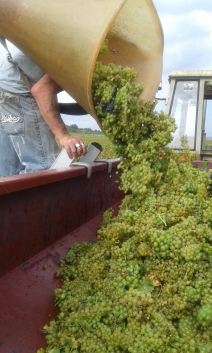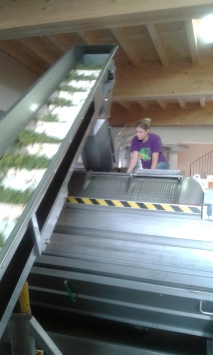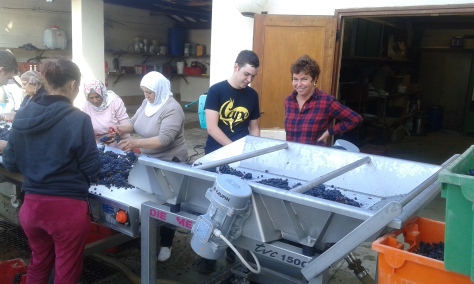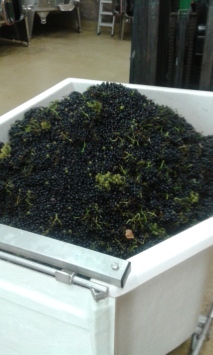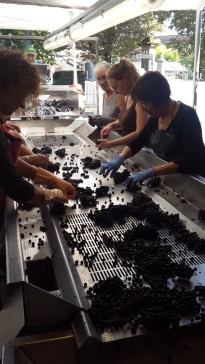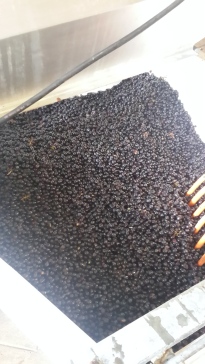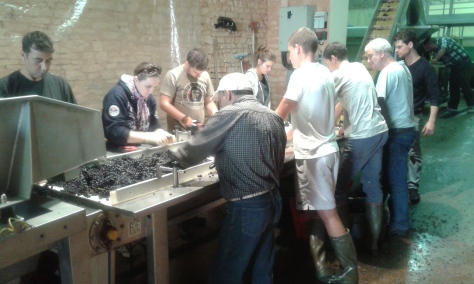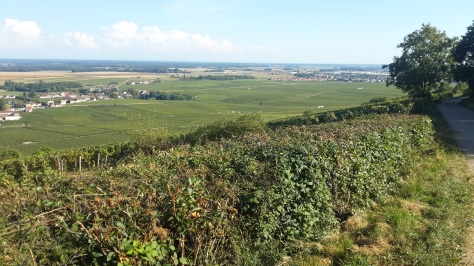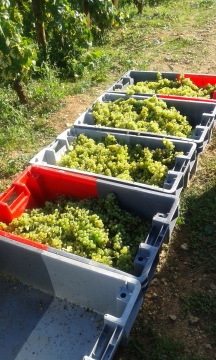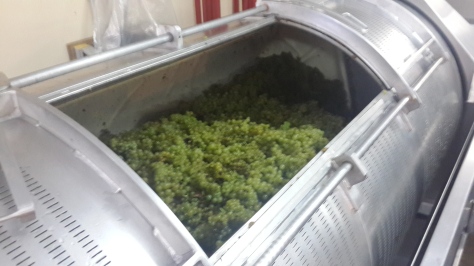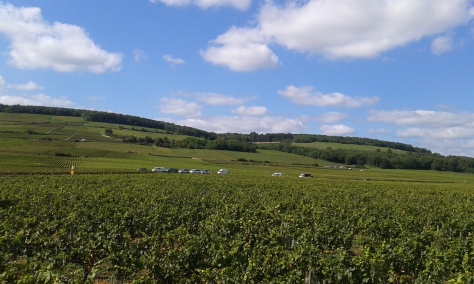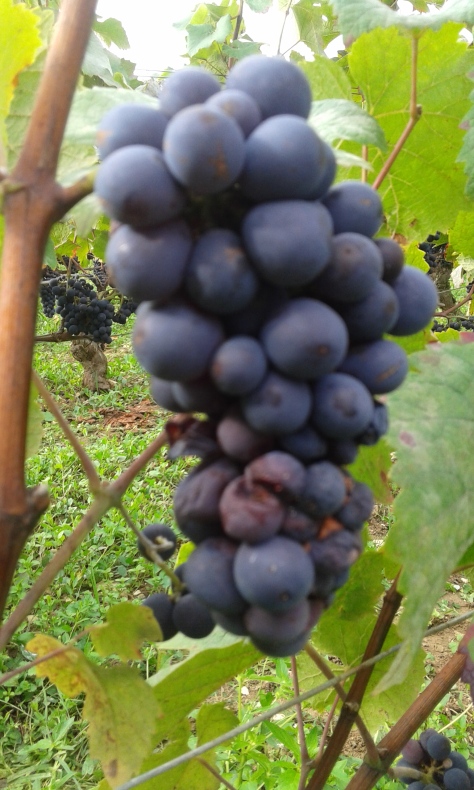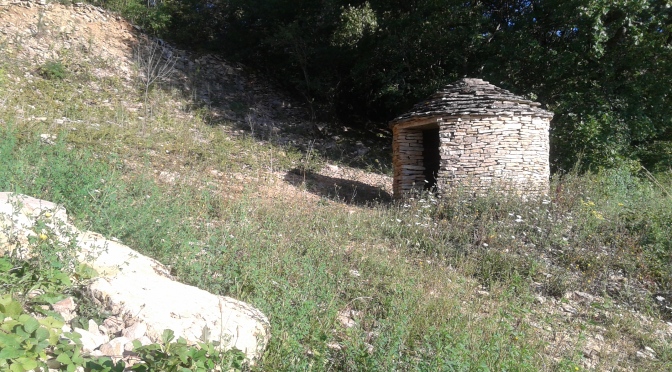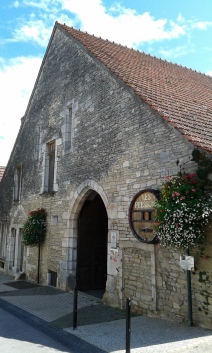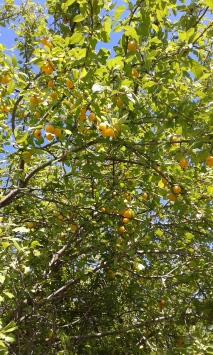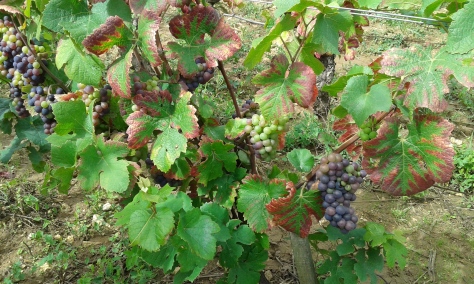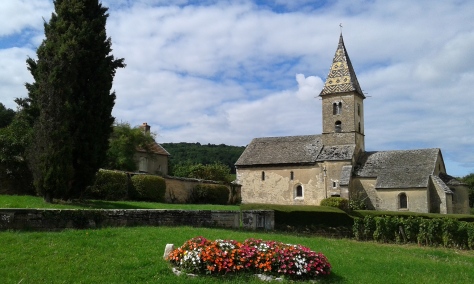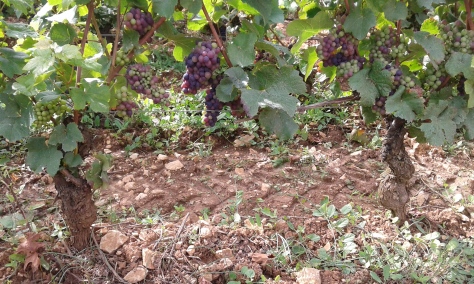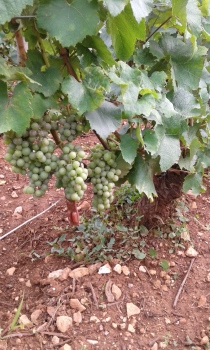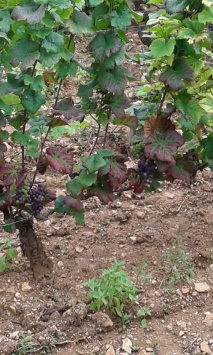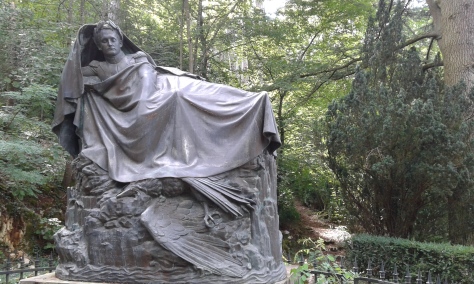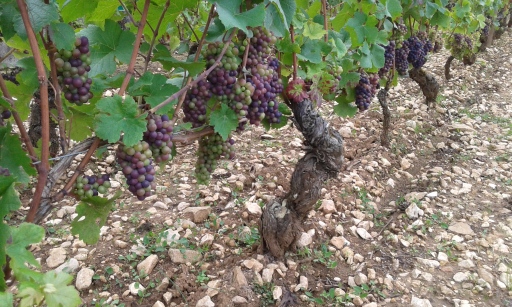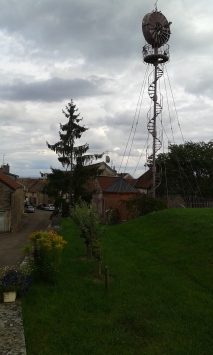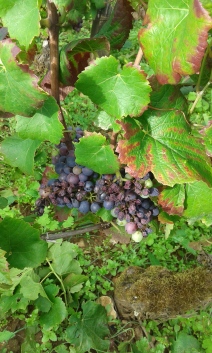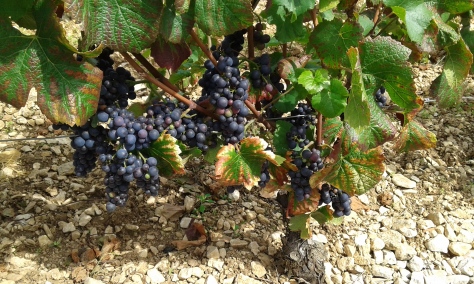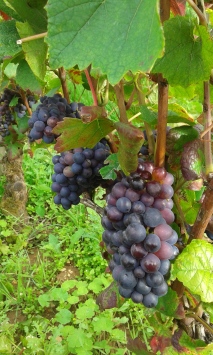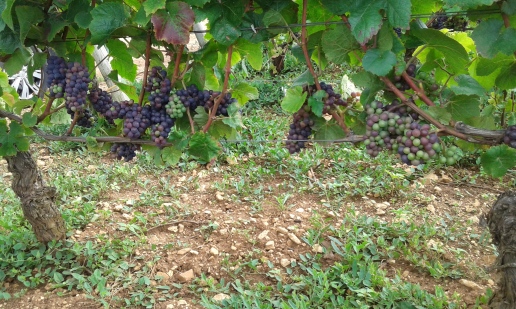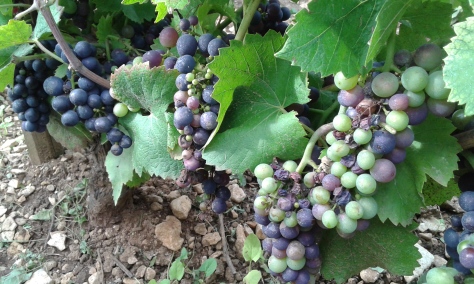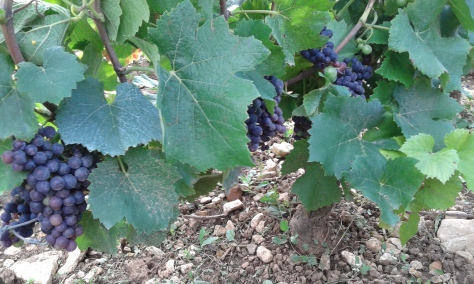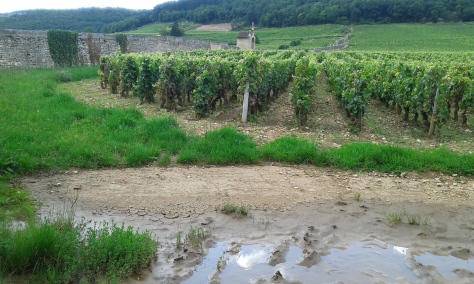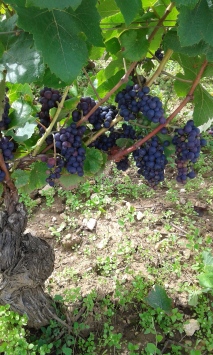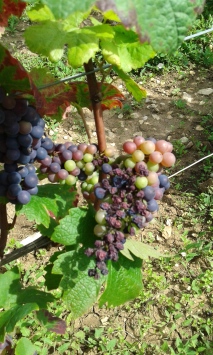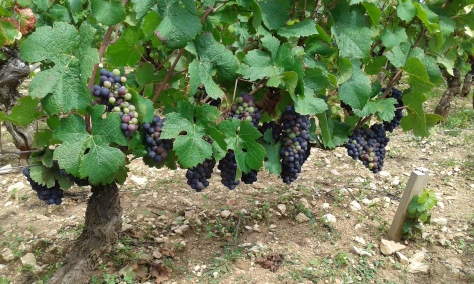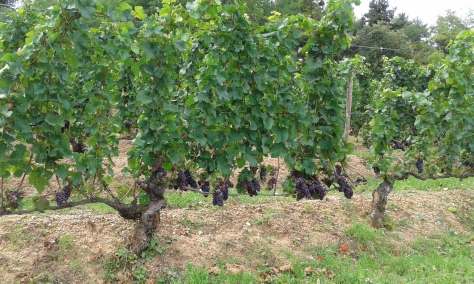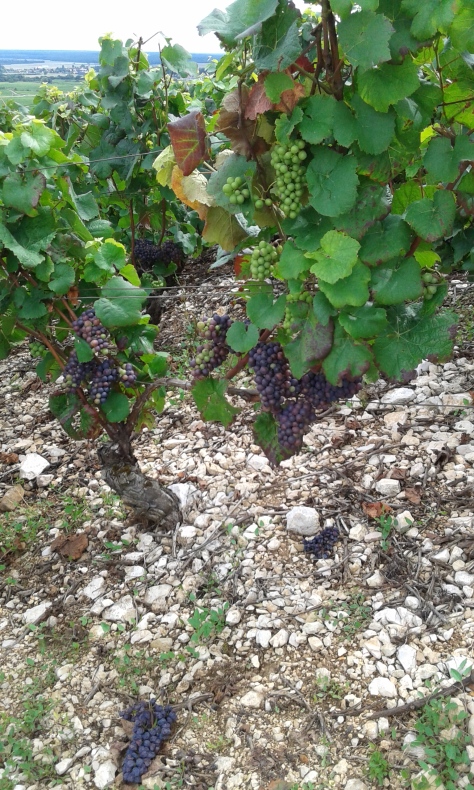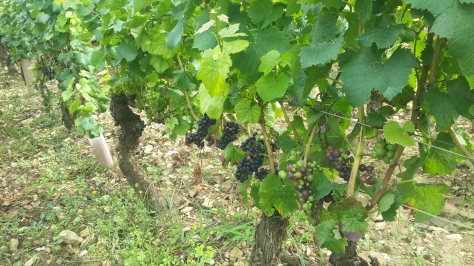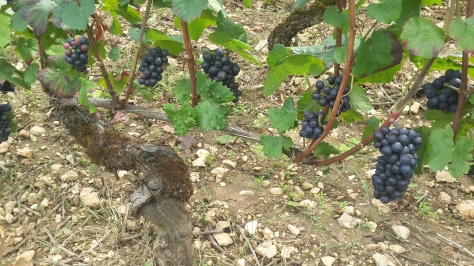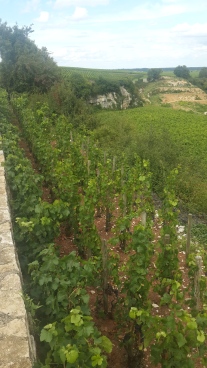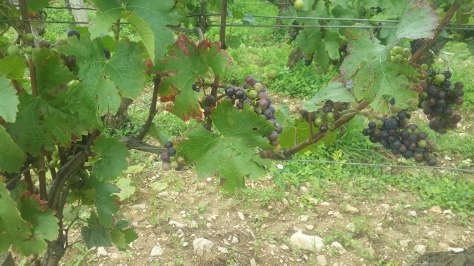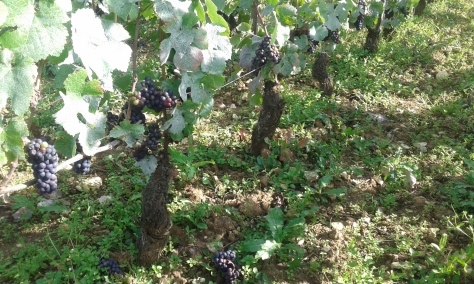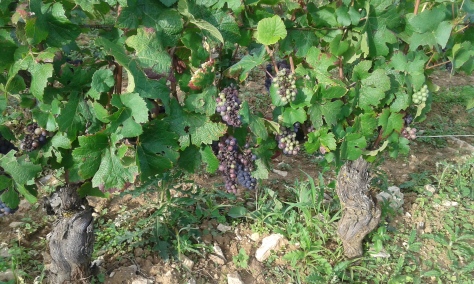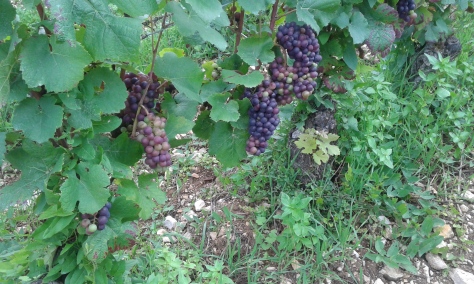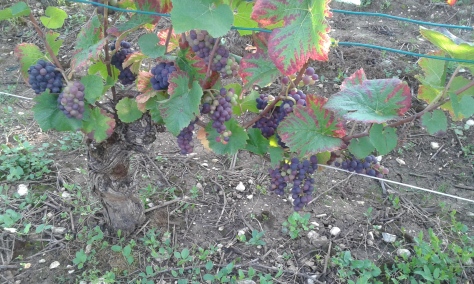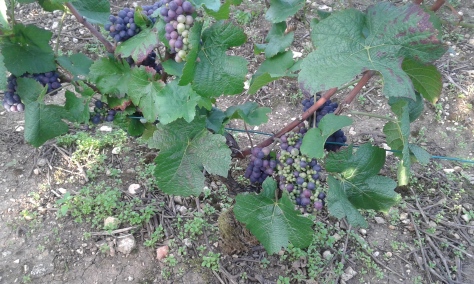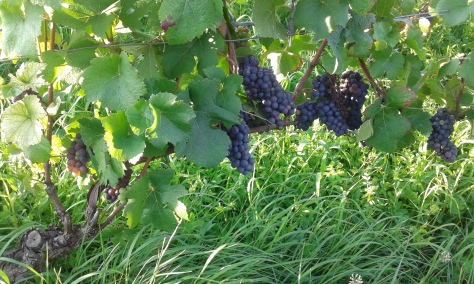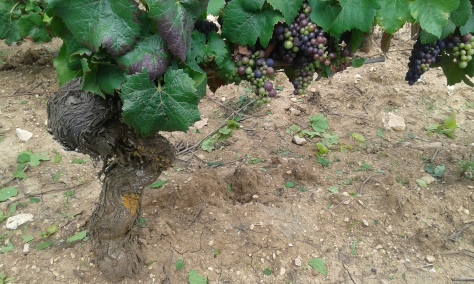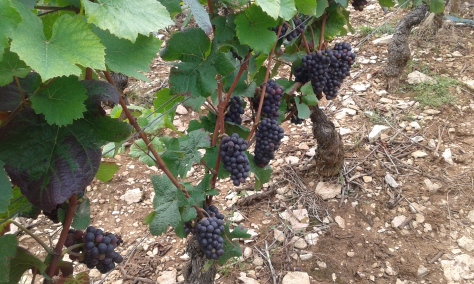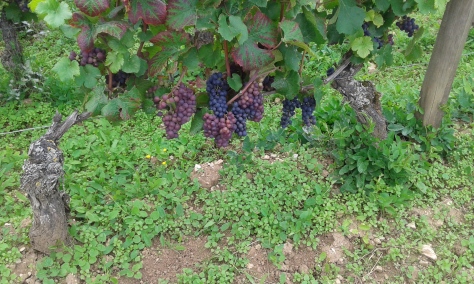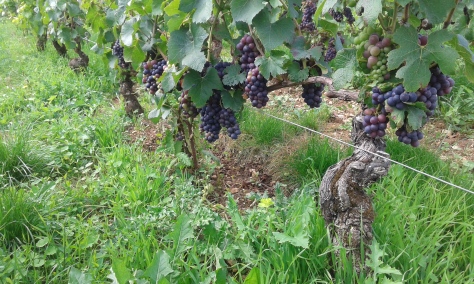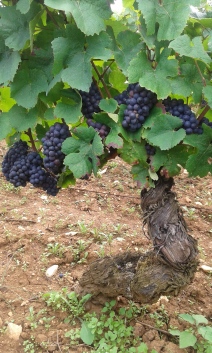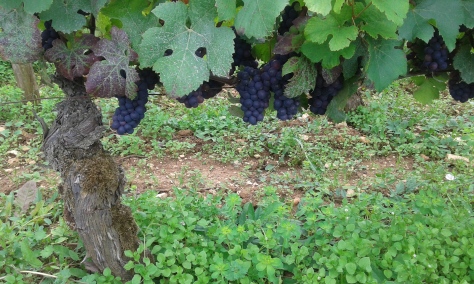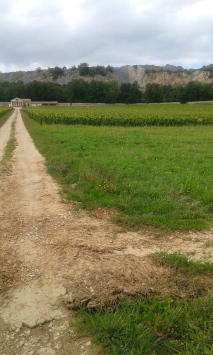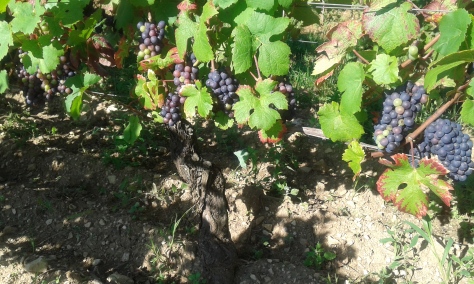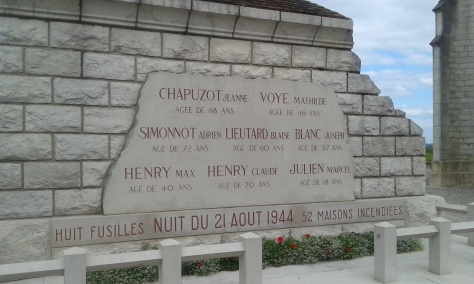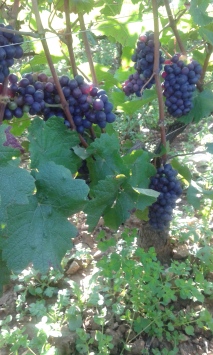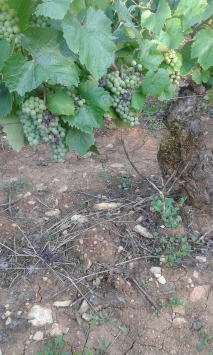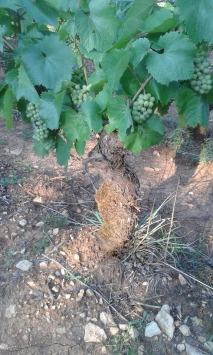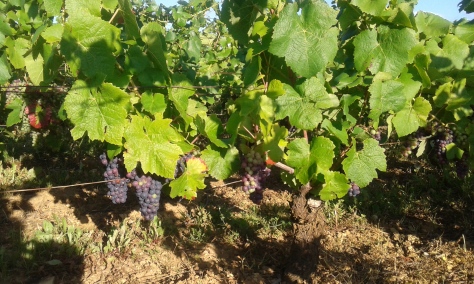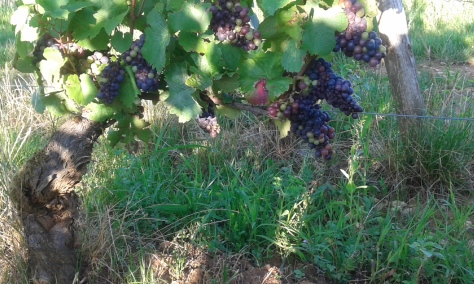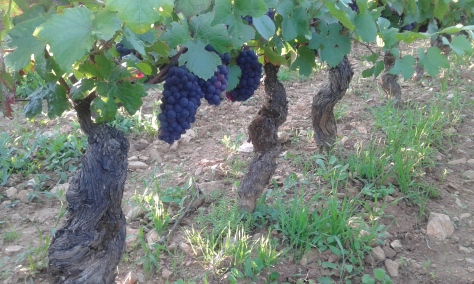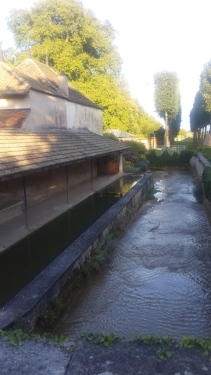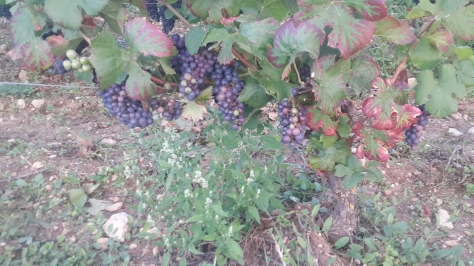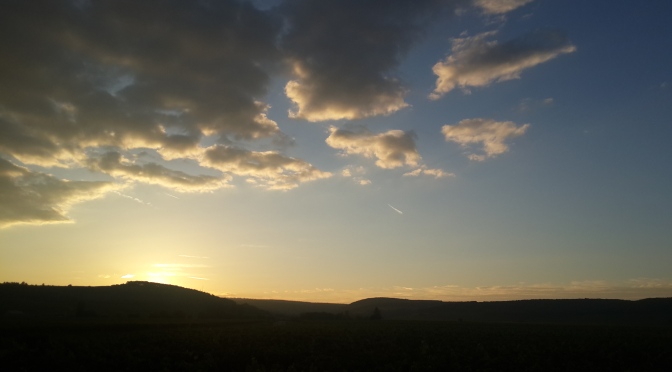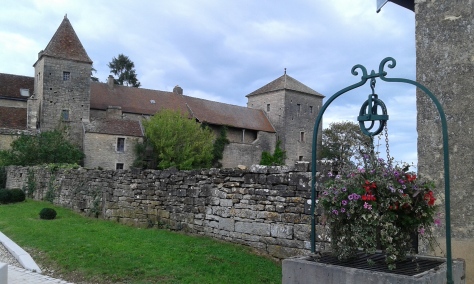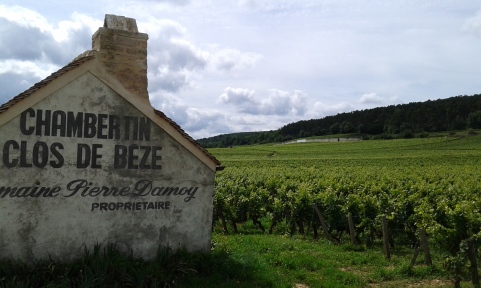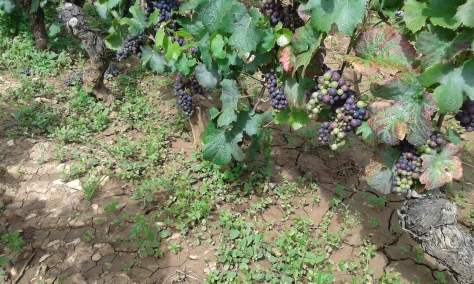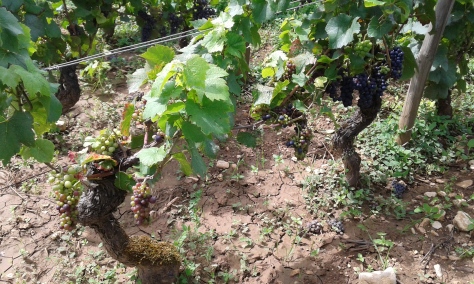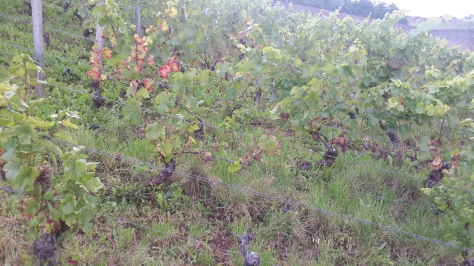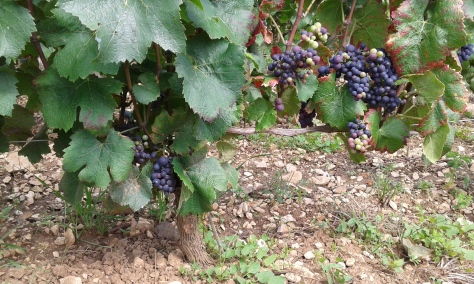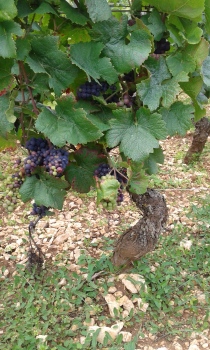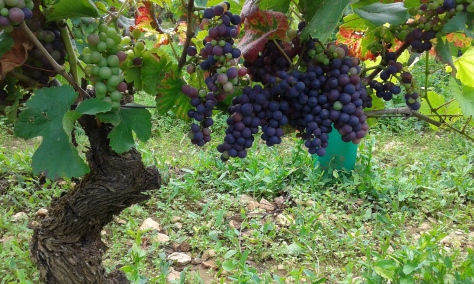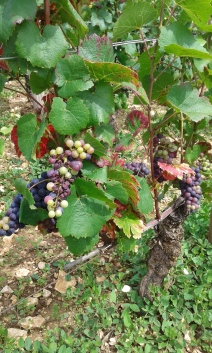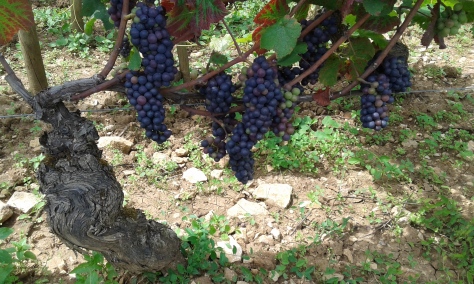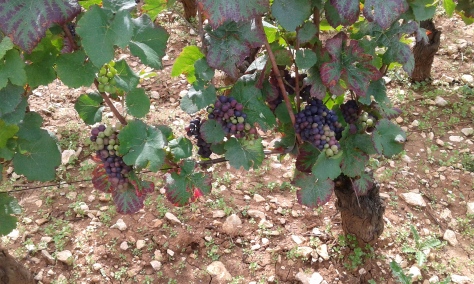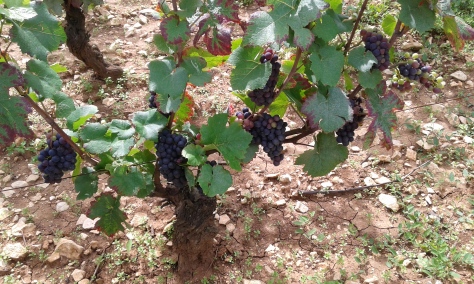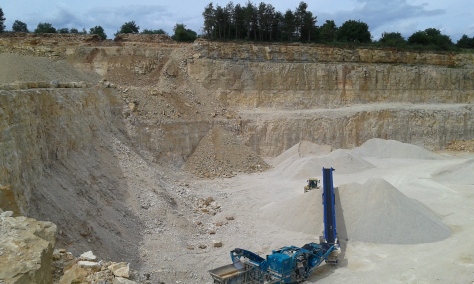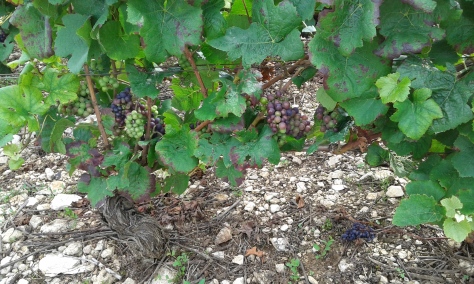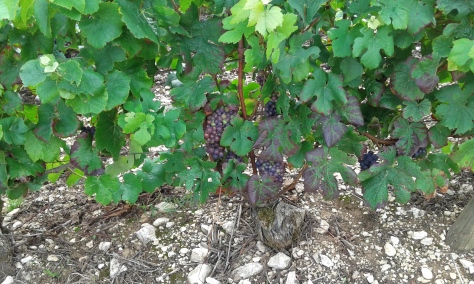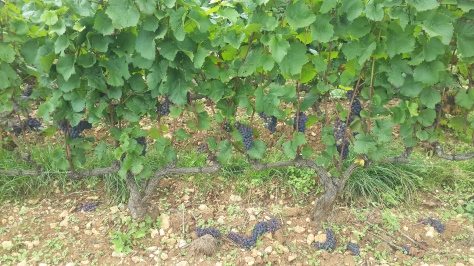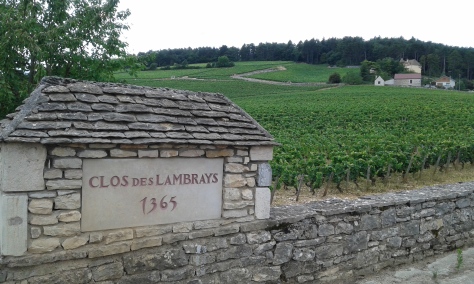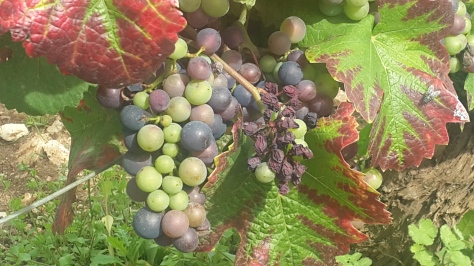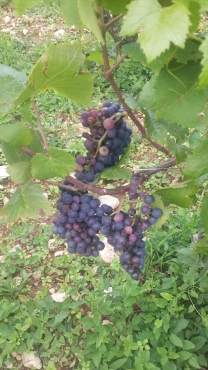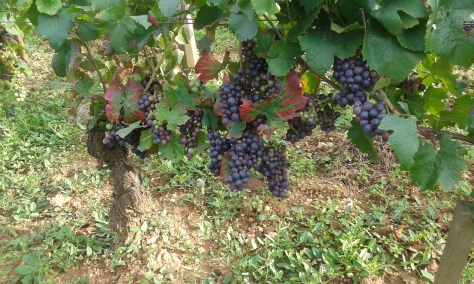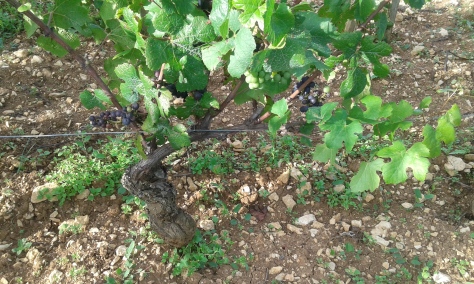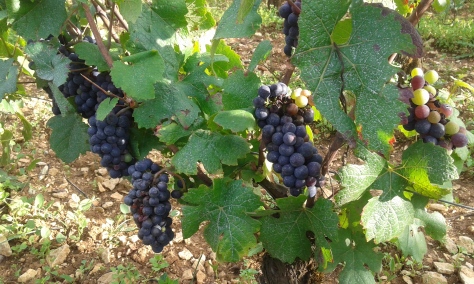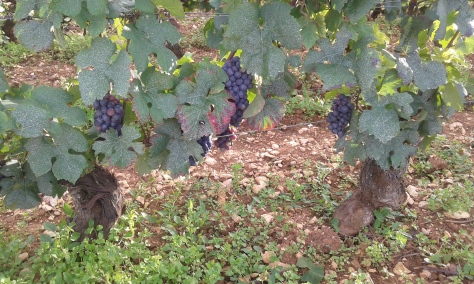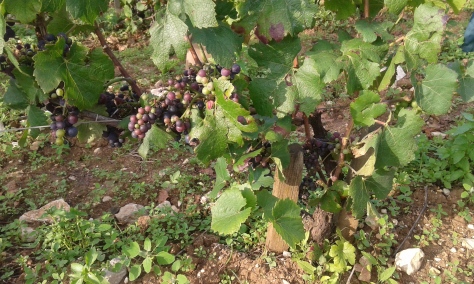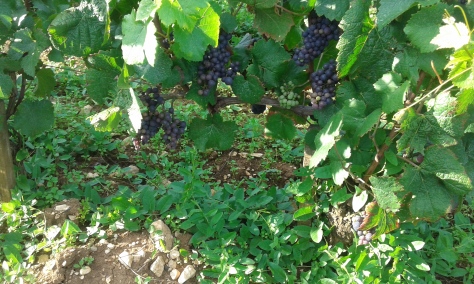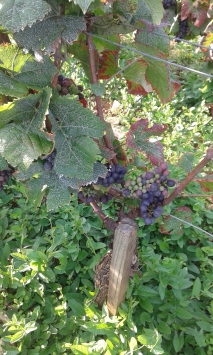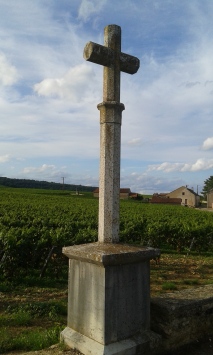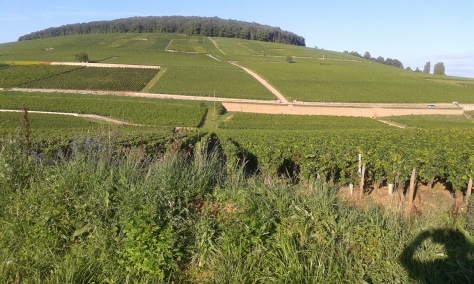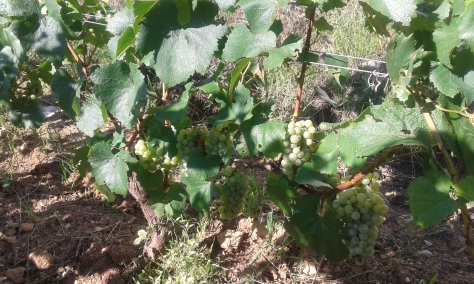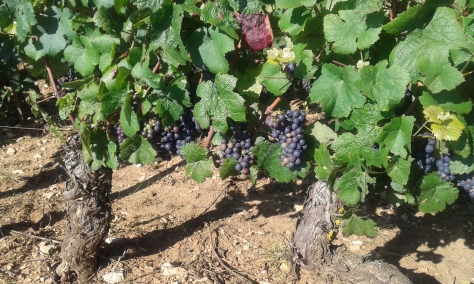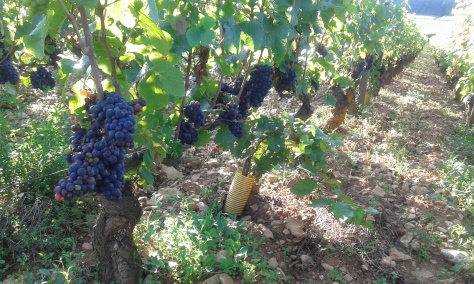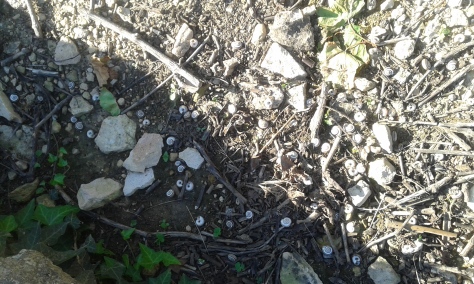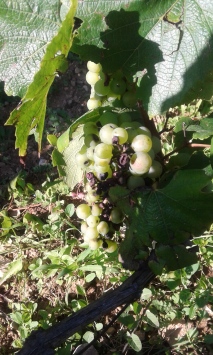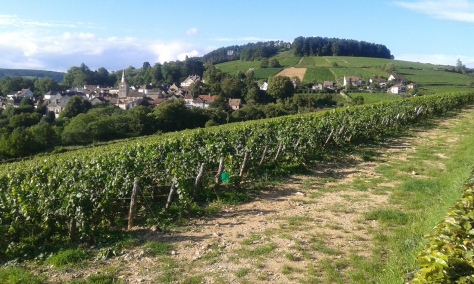It has become commonplace for winemakers to proclaim “the wine makes itself, all you need is good grapes”. Another vigneron recently told me “I went into winemaking because it was easy, and I was not a smart student, even stupid people can do it.” While there may be some romantic notions attached to the magic of fermentation, and a very certain truth to the idea that you cannot make good wine without good grapes, it does involve a great deal of thoughtful planning, a multitude of choices involving the processes of fermentation, and a significant investment in the proper tools of the trade. The wine does not make itself. This is especially true when making red wine from Pinot Noir grapes.
I have spent the greater part of the last two weeks visiting wineries in the Cote d’Or, as well as the Maconnais and Beaujolais regions, and I have a few points I would like to make about the simplicity of the idea that “wine makes itself”. Most of the year, including the months when the vines are dormant, are spent preparing for the harvest. There is one, primary goal in mind: to bring grapes to ripeness. Lack of sunshine, hailstorms, rain, vinegar flies, and rot can all contribute to defeating this singular purpose. In general, the work of nearly all the seasons is devoted to letting nature run its course, which is, of course, what makes each vintage intrinsically unique and different.
This year, the 2014 vintage in the Cote d’Or, finished with almost perfect weather from mid-August through the harvest. Except for the hailstorms of Saturday, June 28th, and the consistently cold, rainy weather throughout July and the first dozen days of August, we might be talking of a truly great vintage. It will definitely be a good to very good vintage, but now the real work of the winemaker begins: the elevage, or raising of the wine. When raising animals, one talks of breeding and nurturing as elevage, and the same word is used for the aging and finishing of cheeses. Nature may make the grapes, but it is the winemaker’s elevage that makes the wine. And elevage defines a series of choices about one’s grapes and how they are treated, choices determined by the winery’s means, capital, equipment, markets, and reputation, as well as the terroirs or appellations that it produces, and the prices that they demand.
Fermentation is a tumultuous process that requires monitoring and control to be successful. Uncontrolled fermentation can quickly generate too much heat, killing the yeasts that are the engine behind the process of transforming grape sugars into alcohol, making juice into wine’s first expression. So one of the first controls that must be exercised in fermentation and elevage is temperature control. Many smaller wineries still have concrete vats in their cellars, which do not heat easily and can help delay the onset of tumultuous fermentations. Some concrete vats have radiators installed within to help regulate temperature. Others using concrete or wooden vats depend on dry ice (frozen carbon dioxide) added to the vats to cool warm must or juice that is fermenting too rapidly and in danger of becoming too hot. I have also seen a lot of larger wooden vats with thermo-regulation radiators. Other growers use stainless-steel, temperature-controlled vats. And some have entire wineries that are not merely air-conditioned, but actually fully refrigerated, capable of being cooled to less than 5°C in a matter of hours.
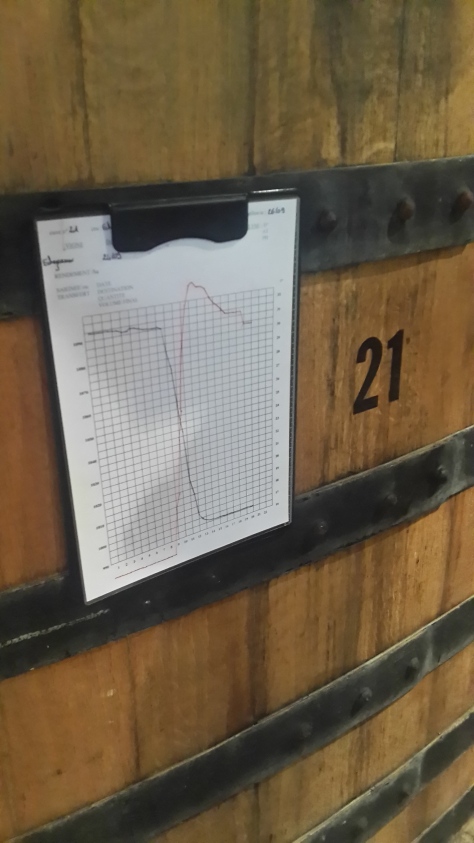
A large part of what vessels one uses for fermentation depends on economics. Smaller growers with less capital cannot afford stainless steel for everything. Many family domaines remain content to use equipment that has been in place for generations. Other well-capitalized producers can afford the most modern equipment, but prefer wooden vats for what they believe is a better result in their wines. For most it is a matter of choices made within the parameters of economy, tradition, and science. What follows are the profiles of several domains which I have visited recently, and how they approach the elevage of their Pinot Noir wines.
DOMAINE DE LA ROMANEE CONTI (Vosne-Romanee)
The prestige and history of this domaine have been thoroughly documented in other sources, but I was lucky enough to spend a morning with Aubert de Villaine, to learn more about what makes this domaine’s wines amongst the greatest ever produced.
Of course one begins with grapes from vineyards renowned for their wines since the 10th century. But once the decision is made to pick the grapes, no expenses are spared to bring them into the winery in perfect condition. The first triage, or selection of bunches, is made in the vineyards by the pickers, most of whom return to pick at DRC year after year. The cadre of itinerant workers is over 100 strong, over 80 deployed in the vineyards to select and pick, and the rest in the cuverie performing another selection at the tables de triage. The economic ability to hire this many experienced, returning workers allows DRC to pick their parcels quickly and without interruption. The Grand Cru Romanee Conti was picked quickly on the morning of Sunday, September 19th in a matter of two hours, because of storms forecast for that afternoon.
The grapes at DRC are picked into the smallest picking baskets I have ever seen. Only one layer of bunches goes into each basket, maybe eighteen to two dozen bunches of grapes, so that the grapes selected by the experienced pickers arrive at the winery in prisitine condition, to be sorted and inspected again at the tables de triage. Given that the DRC wines are fermented mostly as whole clusters, this is an essential detail.
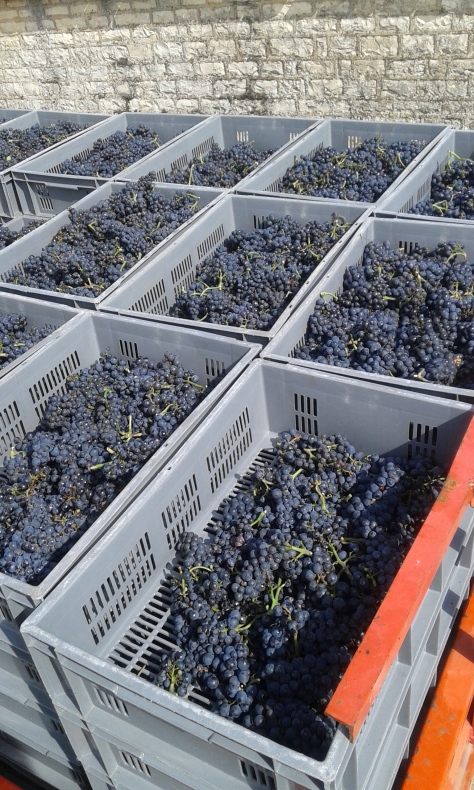
M. de Villaine reported to me that in 2014, depending on the parcel, up to 80% of whole clusters went into the large wooden fermentation vats. After fermentation, the resulting young wines are drained off into stainless steel vats, and the marc, the grape bunches, still juice-laden, are put into the pneumatic press to gently extract the more structured and intense juice from the remains of the stems, seeds, and berries, in a process called decuvage.

DRC assembles the press juice and free-run juice immediately into stainless-steel tank, where the combined young wines are allowed to settle out any gross lees before descending by gravity into the barrels in the cellar below. The malolactic fermentation and aging take place in nearly all new oak barrels, custom-made by Francois Freres.

This years crop at DRC is nearly twice as large as 2013’s yields. Even this felicitous result for the 2014 vintage will do little to quench the desires of the world’s elite to own this wine. What is a shame is that so many of these “collections” are repeatedly bought and sold as though they were hedge funds or works of art. I, for one, wish that these collectors would drink more, rather than just collect for the sake of economic speculation or conspicuous ownership. One can gaze at and appreciate art in a museum or private collection, but the pleasure, the “art” of wine is in its savoring, sip by precious sip.
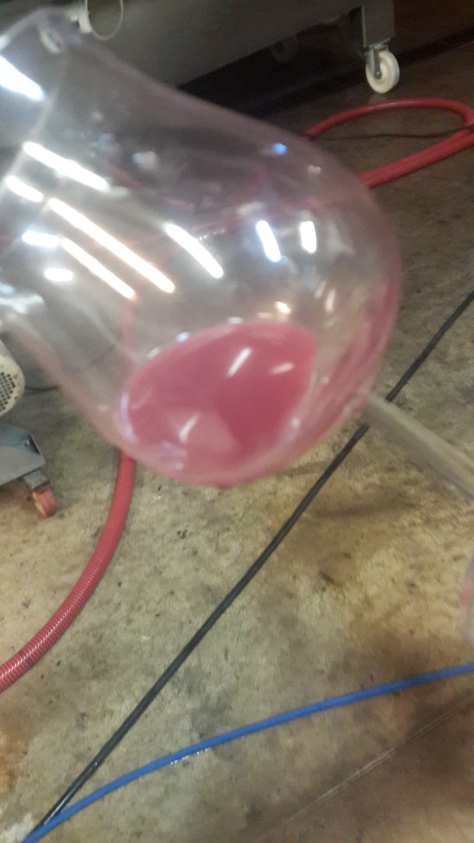
DOMAINE HENRI RICHARD (Gevrey-Chambertin)
By contrast, the family run Domaine Henri Richard is compact, even humble, a little more than four hectares under exploitation, two in villages Gevrey-Chambertin, one hectare in Grand Cru Charmes and Mazoyeres Chambertin, and additional holdings in the appellations of Marsannay and Coteaux Bourguignon. This domaine, now run by the fourth generation of the family, Sarah Bastien, all of 30 years old, has been cultivating its vines biodynamically since 2000. Certified Agriculture Biologique, Sarah and oenologist/chef de culture Guillaume Berthier are producing extraordinary wines of depth and refinement, although mostly for private clients and a few lucky importers.
The process here is reserved and economical. Approximately 20 vendangeurs harvested the domaine’s vineyards over a one week period. I was able to document much of their work in previous posts, as well as occasionally assist at the table de triage. I was happy to be invited to their last day of decuvage, pressing the mostly whole cluster Mazoyeres-Chambertin Grand Cru, and celebrating with a traditional Burgundian lunch of Saucisson au Genes, sausage cooked in the marc of whole cluster Pinot Noir.
This domaine utilizes a collection of cement vats and small, new stainless steel cuves. Temperature controls are a combination of morning harvests, the cool, thick, polished cement walls of the cuves de beton, and plenty of dry ice as the grapes go into vat. As the pictures below demonstrate, these small, but passionate producers, do nearly everything by hand themselves. The modern pressoir is pneumatic, the vats for debourbage after decuvage and pressing are epoxy-lined iron (settling the lees after draining the vats and for assembling the free-run with the pressed-juice), and new oak barrels have not been used since 2012!
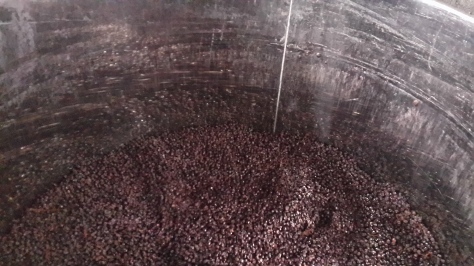

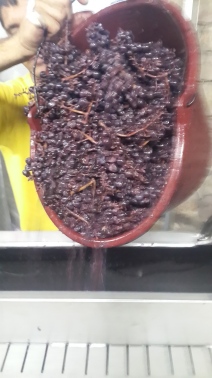
Let us not forget the small rituals that accompany the harvests and milestone moments of each vintage. Harvesters are fed great meals for lunch and dinner each day, with mid-morning and mid-day casse-croutes snacks to keep them well-fueled for the hard work of the days’ harvest (which begins at 7am and ends at 7pm if not later!).
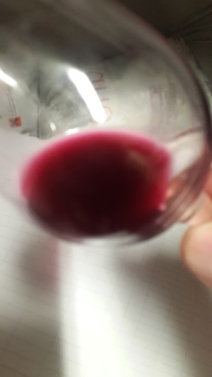
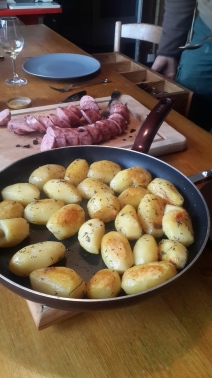
DOMAINE BERTAGNA (Vougeot)
This beautiful and historic domaine, based in Vougeot, is owned by the Reh family, with Eva Reh firmly in charge of the estate. The Reh family also owns the renowned Mosel-Saar-Ruwer estate Reichsgraf von Kesselstatt, which is run by Eva’s sister, Annegret. Domaine Bertagna is blessed with some of the finest 1ers and Grands Crus holdings in the Cote d’Or, from Chambertin, Clos Saint-Denis, Clos Vougeot, Corton-Lalieres, and Corton-Charlemagne, to parcels of 1ers Crus Nuits St. Georges Les Murgers, Vosne-Romanee Les Beaux Monts, Chambolle-Musigny Les Plantes, soon-to-be-planted Chambolle Les Amoureuses, and their renowned monopole Clos de La Perriere just across the path from the Chapter House of the Clos Vougeot itself. The domaine is completed by villages parcels in Vougeot and Chambolle-Musigny, and some excellent parcels of Hautes Cotes de Nuits from the vineyard Les Dames Huguettes on the plateau above and within the commune of Nuits St. Georges. Maitre de chais Denis Rozat supervises the day to day operations of the estate with Eva Reh.
Perhaps it is feminine determination and attention to detail, or perhaps the Kesselstatt experience of making white wines in stainless tanks, but Domaine Bertagna’ facility is a model of modernity. Small stainless steel tanks line the neatly ordered cellar, with larger tanks for assemblage.
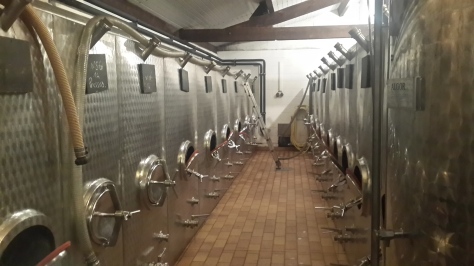
2014 brought superb fruit into the cellars, and after destemming 70% of the clusters, the grapes and clusters were cooled in their vats for a five to seven day cold maceration, to delicately extract the anthocyins and polyphenols of the skins. Temperatures are allowed to rise slowly to begin fermentation, which proceeded quickly in 2014 due to very healthy indigenous yeasts brought in on the fruit. As the alcoholic fermentation finishes, the tanks were raised in temperature to 32 to 35°C for a few days for further extraction of color and flavor. The free run wine is racked off into stainless vats for a day or two of debourbage, before the wines descend into barrels in the cellar for malolactic and aging.
The marc is then pressed to extract the remaining wine, the smaller parcels pressed in a new vertical press, the larger parcels of Hautes Cotes de Nuits pressed in a modern pneumatic press. Interestingly, the press wine is put into barrels separate from the free run cuvees, and assemblage of the press wine does not happen until after the malolactic fermentations are completed. The addition of the press wine to the final assemblage is done by tastings and blendings to produce a final wine that is rich, structured, and powerful, yet refined, elegant, and smoothly textured. Unused press wine is usually added to the Hautes Cotes de Nuits assemblage.

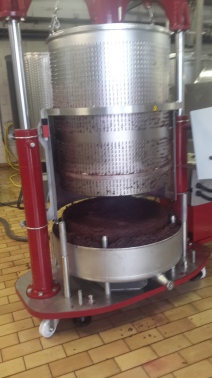
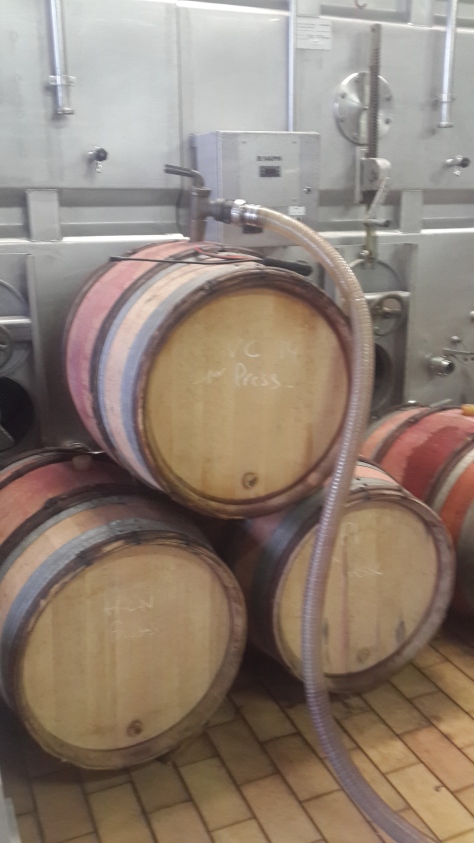
I was able to taste the free run and press wines from the Vougeot Le Village, Nuits 1er Cru Les Murgers, and the Vougeot 1er Cru Monopole Clos de La Perriere. In general, the color of the press wines was lighter, and as expected, more cloudy. The nose of the free run wines was fruitier, brighter, and juicy, while the smells of the press wines were somewhat more brooding, with a spicy backbone of cinnamon and cardamom. In the mouth both press and free run samples possessed bright, focused, tingling acidity (these were pre-malolactic after all), but the press wine had the structure, depth, and sheer power to complement the voluptuously textured, sumptuous fruit of the free run examples. A very interesting tasting, which I look forward to following as the vintage develops in barrels.
DOMAINE TOLLOT-BEAUT (Chorey-les-Beaune)
I was unable to visit Nathalie and Jacques Tollot during decuvage, but from previous posts one can see a remarkable commitment to modernity as well as tradition. This family estate goes from strength to strength each vintage, and 2014 saw the first use in Burgundy of an optical sorting table at the domaine. After destemming, the berries proceed swiftly along a sorting table, where optical scanners detect any slight irregularities in berries, and puffs of air blow the irregular berries into a collection bin, where they are discarded with the stems. This machine can sort two tons per hour, the equivalent of a one hectare parcel of relatively high yield in Burgundy.

I have been regularly visiting the Tollot family winery since 1988, over twenty five years. Their swift embrace of innovations, while maintaining a true sense of family tradition, is evident in nearly all aspects of their winemaking. From the new optical table de triage above, to the sophisticated and powerful heat-exchange cooling system below, to the change in bottle styles to accommodate a longer, more expensive cork to ensure a more secure closure for the aging of their wines, this family does it right. Of course their size and annual turnover give them much greater flexibility than most smaller family domaines.

DOMAINE PIERRE DAMOY (Gevrey-Chambertin)
Blessed with amongst the largest holdings of Grands Crus in Gevrey-Chambertin, with lovely vineyards in Marsannay and a distinguished monopole, Clos du Tamisot, a Gevrey villages of 1ers Crus quality, Pierre Damoy is a wonderfully eclectic and opinionated grower. The holdings of the domaine include over one third (5.36 hectares) of the totality of Chambertin Clos de Beze, and nearly half of Chapelle-Chambertin. Since 1990, Pierre has returned his family patrimony to its rightful place amongst the finest names of the Cote d’Or. With one foot firmly in the traditions of his forebearers (organic viticulture, late but lightning-quick harvesting, long macerations), the other is totally dedicated to the most modern of tools for the making of his wines. He is also an amateur horticulturalist, with an extensive collection of plants from around the world, including tropical flowers, ferns, cacti, and fruit bearing trees, all surrounding a small fresh water fish pond with croaking frogs.
Previous posts and photos showed up to ten people at the table de triage, and once the grapes are into the cellar, the commitment to modern technology is nearly total. The entire fermentation room is refrigerated, with individual, temperature-controlled regulation for most of the stainless steel vats. During picking, the grapes and approximately 25 to 30% whole clusters went into their vats with the fermentation room at 5°C. This was often a welcome respite from the heat of the harvest outside. After a five to seven day prefermentation cold maceration, Pierre allows the temperature inside to rise, and the fermentations begin.
In 2014, the cuvaison was prolonged using the domaine’s abilities to control the temperature within the vats as well as the winery fermentation areas. By the time of decuvage, the room was quite warm, as Pierre likes to let the vats reach 32°C for a few days of extra extraction.
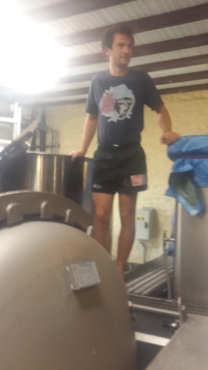
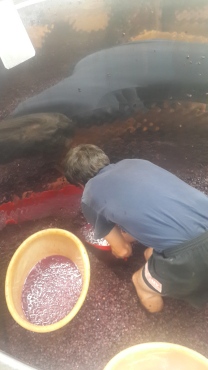
After pressing, the free run and pressed juices are assembled in stainless tanks for a debourbage (settling of the lees) that lasts from four to ten days, depending upon how quickly the juice becomes clear. Pierre does not like to begin with cloudy juice in the barrels.

When we talked about the barrels themselves, Pierre is clearly influenced by his horticultural studies, and his close personal attention to minute details. Domaine Pierre Damoy uses only one forest for its barrels, Troncais, and while it is true that there are no Appellation d’Origine regulations for the forests used by barrel makers, Pierre avoids this potential pitfall by selecting his wood through a personal visit to the forest with his tonnelier Francois Freres, where he selects the actual trees that will be harvested, cut, dried for three to four years, and fashioned into barrels. Pierre also prefers a very light toast to his barrels, complemented by steam seasoning to remove sappy or toasty elements. For Domaine Pierre Damoy, the barrels are where the living wine breathes through the oak staves during malolactic and aging. It is not a flavor additive.

THE WORK AHEAD
Elevage, the raising of the wine from its alcoholic fermentation in larger vats, through its malolactic fermentation and its aging in barrels, is a process that requires a multitude of choices at different stages, as the wine evolves. From a decision about whole clusters versus destemming, to the length of time for cuvaison (a process that itself includes multiple decisions about the length of pre-fermentive cold maceration, temperature of fermentation, warm post-fermentation maceration, decuvage, and finally the treatment of the press wine) decisions are taken largely through tasting the wines as they begin their evolution into Burgundy.
It may often be said, and, during irregular visits, it can appear that the wines make themselves. But over time, the wines evolve into something, an ideal perhaps, that the winemaker is searching for. It is an expression of place, a personalized flavor, the saveur of another vintage telling its story, until finally the bottling is done and its proud owners reveal their hard work and individual efforts to a waiting and thirsty public. This is why I love Burgundy: in no other wine region on earth are the expressions of singular varietals so idiomatic, so personal, so precise, and so delightful to drink.

